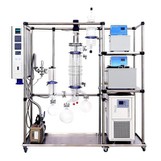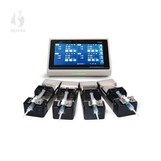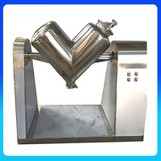What are the ventilation requirements for a muffle furnace?
As a seasoned supplier of muffle furnaces, I understand the critical importance of proper ventilation when it comes to operating these powerful pieces of equipment. Muffle furnaces are widely used in various industries, including laboratories, research facilities, and manufacturing plants, for processes such as heat treatment, ashing, and sintering. However, without adequate ventilation, the operation of a muffle furnace can pose significant risks to both the equipment and the personnel working in the vicinity.


Why Ventilation is Necessary
Muffle furnaces generate high temperatures and often involve the use of various materials that can release harmful gases and fumes during the heating process. These gases can include carbon monoxide, nitrogen oxides, sulfur dioxide, and volatile organic compounds (VOCs), depending on the nature of the materials being processed. Inhalation of these gases can cause a range of health problems, from mild irritation of the respiratory system to more serious long - term health issues such as lung damage and cancer.
In addition to the health risks, improper ventilation can also affect the performance and lifespan of the muffle furnace. The accumulation of heat and fumes inside the furnace chamber can lead to overheating, which may damage the heating elements, insulation, and other components of the furnace. This can result in costly repairs and downtime, affecting the productivity of your operations.
Ventilation Requirements
Airflow Rate
The airflow rate is one of the most important factors in ensuring proper ventilation for a muffle furnace. The airflow rate should be sufficient to remove the heat and fumes generated by the furnace quickly and efficiently. A general rule of thumb is to have an airflow rate of at least 100 cubic feet per minute (CFM) per square foot of the furnace's external surface area. However, this can vary depending on the size, power, and type of muffle furnace, as well as the materials being processed.
For example, if you have a small bench - top muffle furnace with an external surface area of 2 square feet, you would need an airflow rate of at least 200 CFM. Larger industrial muffle furnaces may require significantly higher airflow rates, sometimes in the thousands of CFM.
Ductwork
Proper ductwork is essential for channeling the heat and fumes away from the muffle furnace and out of the building. The ductwork should be made of heat - resistant materials, such as stainless steel or ceramic, to withstand the high temperatures generated by the furnace. It should also be properly sized to ensure adequate airflow. A duct that is too small will restrict the airflow, while a duct that is too large may result in inefficient ventilation.
The ductwork should be installed in a straight line as much as possible to minimize resistance to airflow. Any bends or elbows in the ductwork should have a smooth radius to reduce turbulence. Additionally, the ductwork should be properly sealed to prevent leaks, which can allow fumes to escape into the surrounding environment.
Exhaust System
An effective exhaust system is required to draw the heat and fumes out of the muffle furnace and through the ductwork. The exhaust system typically consists of a fan or blower that creates a negative pressure inside the ductwork, pulling the air and fumes out of the furnace.
The fan or blower should be sized appropriately for the airflow rate required by the muffle furnace. It should also be able to operate continuously without overheating, as muffle furnaces may run for extended periods of time. Regular maintenance of the exhaust system, including cleaning and lubrication of the fan or blower, is necessary to ensure its proper functioning.
Location of the Furnace
The location of the muffle furnace within the facility also plays a role in ventilation. The furnace should be placed in an area with good natural ventilation, if possible. It should be away from sources of ignition, such as open flames or electrical equipment that can generate sparks. The furnace should also be positioned in a way that allows easy access to the ventilation ductwork and exhaust system for maintenance and inspection.
Complementary Equipment and Their Importance
In addition to proper ventilation for the muffle furnace, other equipment can enhance the overall safety and efficiency of your laboratory or industrial operations. For instance, a V Type Powder Mixer Machine can be used to mix powders before they are processed in the muffle furnace. This ensures a more homogeneous mixture, which can lead to more consistent results during the heating process.
A Stainless Steel Electric Water Distiller is also crucial for providing high - purity water for various applications in the laboratory. High - purity water is often needed for cleaning the samples or for use in chemical reactions that may take place in conjunction with the processes carried out in the muffle furnace.
Furthermore, a Portable Autoclave Sterilizer can be used to sterilize equipment and samples. This is especially important in research and manufacturing processes where contamination can affect the results or the quality of the final product.
Conclusion
Proper ventilation is a non - negotiable aspect of operating a muffle furnace safely and efficiently. By ensuring the right airflow rate, using appropriate ductwork, installing an effective exhaust system, and considering the location of the furnace, you can minimize the health risks associated with the operation of the furnace and extend its lifespan.
If you are in the market for a muffle furnace or need advice on ventilation requirements for your existing furnace, I encourage you to reach out to discuss your specific needs. Our team of experts is ready to assist you in selecting the right equipment and ensuring that it is installed and operated in a way that maximizes safety and performance.
References
- ASTM International. "Standard Practice for Safety in the Use of Muffle Furnaces." ASTM standards.
- National Fire Protection Association (NFPA). "NFPA 86 - Standard for Ovens and Furnaces."
- Occupational Safety and Health Administration (OSHA). "General Industry Standards for Ventilation."




